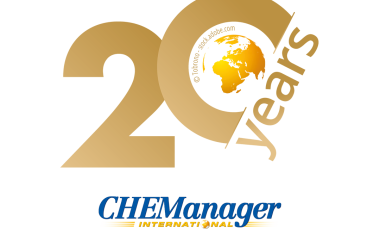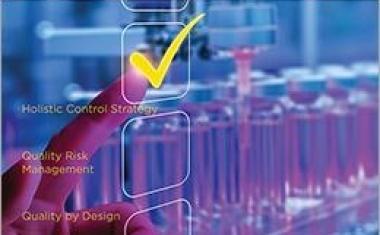ARC Advisory Group’s Collaborative Process Automation System


A Look Ahead - A Vision of Collaborative Process Automation System (CPAS) is the ARC Advisory Group's vision of how process automation systems should evolve through the next decade. CPAS does not describe any particular commercially available system, but rather it presents a conceptual model as a vision. While the technologies associated with CPAS are available and proven, not all are currently available within any single offering. After examining the evolution and history of process automation systems in our March issue, ARC's Director of European Research David Humphrey now explains the group's concrete vision of how the evolution of process automation should continue in the future.
When the benefits of utilizing information technologies in process plants became obvious, the major process automation companies all brought new systems to market. This marked the evolution to the next generation of automation systems. Each system differed, based on how a specific supplier viewed the problems to be solved and their perceived solutions to those problems. This led to a period of confusion for users, leading ARC to draft a vision for a new system concept that supported process control, advanced process control, and operations management applications, complemented by human empowerment applications such as decision support and advanced analytics.
This vision needed to include general guiding principles, while also providing enough detail to allow in-depth internal discussions as well as productive problem-solution discussions with external suppliers. This effort resulted in the Collaborative Process Automation System, or CPAS.
CPAS Guiding Principles
In the first step, ARC established guiding principles for applying collaborative process automation. We used these guiding principles to create the functional requirements, architecture and technology choices. These principles are viewed as a layered structure, with each subsequent principle supporting those above it.
Return on Assets Value Definition
Most users purchase process automation systems to stay technologically current and reduce total cost of ownership (TCO) relative to minimized risk, rather than to achieve continuous improvement and associated economic gains. The project-oriented nature of acquiring automation tends to mask appreciation for the true contribution process automation can make to return on assets (ROA).
The absence of a return on investment (ROI) feedback mechanism and a common basis for measuring performance between business and manufacturing systems further complicates the issue. Operational excellence (OpX), the first supporting layer to ROA, delivers measurable performance improvements by focusing on doing more with less as well as working more effectively and reducing cost.
Effectiveness, Agility and Visualization
Effectiveness, agility, and performance visualization are keys to operational excellence. Effectiveness and agility support the principle of flawless operation. Research shows that many process plants operate at less than Four Sigma performance levels.
Automate And Empower
Automating everything that should be automated ensures that manual tasks will always be executed based on best practices. Automation also frees up time for worker empowerment, providing these knowledge workers with the opportunity to perform more value-adding functions.
Automation Asset Management
Traditionally, each DCS employed a proprietary system and configuration management environment. CPAS provides an open platform and a mixed supplier environment. In this environment, each application retains its own system and configuration management, but a unified automation asset management facility for configuration management and system health addresses the issue of multiple system and configuration facilities. Configuration management includes an audit trail, priority access, and failsafe configurations for all applications and devices in the system.
Functionally Transparent and Logically Concise
Applications need to interoperate directly across a work process, without requiring intermediate databases or gateways. By removing barriers, applications can operate in tight, but open, configurations. Tight configuration refers to operation inside of a unified communications environment. To be efficient, applications also need to be logically concise in the way they perform their functions. The unified communication environment allows the applications to be functionally transparent. Unification relies on standards to minimize gateways.
Data Certainty And Traceability
Data and information represents CPAS' blood flow. However, at any point in time, up to 10% of the field device-based signals in any system can be inaccurate for one reason or another. Therefore, it is important for this data to have associated quality tags. Dependent variable data should also have quality tags. The regulated industries require that product constituents can traced through their processes, thus CPAS also accommodates traceability functions.
CPAS Logical View
CPAS centers on the common information infrastructure, or single communications backbone. Since Ethernet TCP/IP has become the standard networking protocol for business, manufacturing, and personal use, it can serve as the single logical communications backbone. While security components provide some separation, this virtually remains a common backbone.
This standards-based architecture has a long lifecycle, which, for the first time, supports an evolutionary approach to system upgrades and subsequent new generations of systems that suppliers will bring to the market. In the past, these were replacement events.
This architecture supports a wide variety of functionality. For example, it provides a native architecture for interfacing to wireless local area networks.
The standards-based Foundation Fieldbus or Profibus PA for process control and Profibus and DeviceNet for logical control are easily interfaced through linking devices. Application-specific appliances such as analyzers, tracking devices, and others can also be interfaced easily. Application servers supporting mission-critical applications interface through redundant channels with loosely coupled, non-mission-critical applications interfaced through OPC. Finally, since they share the same logical backbone, business systems and automation systems can communicate natively.
Although CPAS is a single model with distributed processing, the configuration standard (IEC 61131-3) utilized in CPAS requires use of common services, primarily system management and master time. System management monitors the health of the system and reports any abnormalities. Master time provides the basis for all time stamps in the system; synchronized to the network time protocol in TCP/IP. Both these shared services reside on a station in the system with a provision for each to be automatically reconstituted on a backup station if the primary station fails.
Part one of this series, which covered the evolution and history of process automation systems, was published in our March issue and can be read online here: http://www.chemanager-online.com/en/topics/control-automation/arc-advisory-group-s-vision-evolution
Company
ARC Advisory Group GmbH & Co KGStadttor 1
40219 Düsseldorf
Germany
most read

ECA Foundation Aims to Become Largest Pharma Association for GMP/GDP Compliance
The ECA Foundation, one of the most important not-for-profit organizations for regulatory expertise in the pharmaceutical industry, aims to become the largest independent GMP/GDP organization in the world.

20 Years of CHEManager International
Incredible but true: CHEManager International is celebrating its 20th anniversary!

Relocation of Chemicals Production Footprint in Full Swing
A new Horváth study based on interviews with CxOs of Europe’s top chemical corporations reveals: The majority of board members expects no or only weak growth for the current year.

ISPE Good Practice Guide: Validation 4.0
The Validation 4.0 Guide provides a comprehensive approach to ensuring product quality and patient safety throughout a pharmaceutical product's lifecycle.

Pharma 4.0 – the Key Enabler for Successful Digital Transformation in Pharma
Part 1: Building a Business Case for Pharma 4.0










